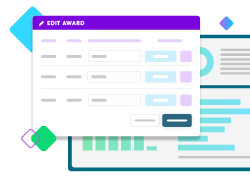Responsive Philanthropy: How to Address Community Needs in Time of Crisis

Operations at Headwaters Foundation for Justice, a foundation that invests in grassroots organizations across Minnesota, were humming along well. The social justice organization supported Black and Indigenous people through grantmaking with an annual budget between $2 million and $3 million.
Then 2020 happened and community needs spiked.
To meet demand, the foundation launched two rapid response funds for public health and social justice initiatives within a month of each other. What happened next is the stuff of nonprofit dreams: These campaigns brought in $4 million.
But that also presented a challenge. The foundation needed to mobilize the funds and turn them into grants that would tangibly change the lives of Headwaters’ communities in real time. This required speed and urgency well beyond the typical (still-hectic) operating procedure.
If this sounds familiar, you’re not alone. The pressure to respond when demand spikes in the communities you serve can be great—but these powerful opportunities to make an impact are the reason nonprofits exist. Having the financial agility to rise to the challenge can make all the difference.
How can you pave the way for responsive philanthropy in your community’s time of need? By leveraging technology and streamlining processes, your organization can adapt to rising demands with the financial flexibility to thrive.
For a deep dive into how several nonprofits have used these tools to rise to the challenge of growth, watch Blackbaud’s webinar on financial management for nonprofits, featuring Julie Remmelts from Headwaters Foundation for Justice, Curt De Greff from the Parkinson’s Foundation, Stephanie Skryzowski from 100 Degrees Consulting, and Elizabeth Maranakos from Blackbaud, moderated by Heather LeVan from Blackbaud.
Find the Tools to Maintain Momentum
Rapid changes for nonprofits bring pressure from all sides. When your community experiences increased need, there is a higher demand on your services in several ways, including:
Overwhelmed Staff
Nonprofit team members tend to wear many hats and carry immense stress even under normal conditions. The pressure of a demand spike—paired with the urgent desire to support communities in need—can feel insurmountable. Long hours and endless to-do lists press an already-depleted staff more than ever before.
Inadequate Processes
For many nonprofits, outdated and manual processes place a further burden on staff’s time. Antiquated processes can increase human error and detract from the staff’s primary focus of tangibly helping communities. What’s more, even if you know a process needs to be replaced, it falls to the end of the priority list when need spikes and stress runs high.
Shifting Needs
Nonprofits deal with change frequently. Community needs are constantly evolving, so a spike in demand can feel like just the latest in a series of struggles to keep your head above water.
Taken together, these factors can significantly dent a nonprofit’s momentum during a time when they need it to be most effective and responsive. Instead of succumbing to overwhelm during times of increased need, nonprofits require the right tools to help them respond to the community with the necessary financial flexibility.
By making key changes in technology, processes, and culture, your organization can adopt a responsive philanthropy approach to adapt to increased community need.
Leverage Technology to Manage Rapid Change
When demand spikes, a proportionate increase in funding is the best-case scenario—if the organization has the tools to support that growth. In times of urgent need, technology can enable staff to manage rapid changes with greater ease.
The Parkinson’s Foundation is one example of a nonprofit that benefited from technology during a time of growth. The organization underwent a merger of two legacy organizations—National Parkinson Foundation and Parkinson’s Disease Foundation—in 2017.
Maximize Current Tools
In the four years that followed, the organization’s revenue grew from $20 million to $50 million. The team consolidated databases of both organizations and migrated the data to Blackbaud’s Financial Edge NXT and Raiser’s Edge NXT. But the key to success was learning to maximize these tools.
Throughout a two-year project with Blackbaud, the Parkinson’s Foundation made gradual improvements to increase the engagement and experience of the organization’s 2.6 million constituents. After cleaning and integrating its database, the nonprofit better understood the constituent journey, which proved to be key for generating additional donations.
Build Integrations
When Headwaters mobilized its rapid response funds in 2020, technology made all the difference. The nonprofit leaned on Blackbaud Raiser’s Edge and Blackbaud Grantmaking to make it happen. The integrations between these solutions enabled Headwaters not only to accept the increased volume of donations but also to convert the funds to community grants.
The increased need brought high levels of urgency, so it was essential to get funds in the system and back out through grants quickly but thoughtfully. The tools allowed the team to efficiently distribute the grants to community reviewers and gave them the confidence to mobilize an amount of funding they couldn’t have supported otherwise.
In addition to times of major growth, technology helps nonprofits with essential day-to-day operations and even cost savings. For instance, picture a nonprofit team member who takes time out of their day to drive a physical check to a board member for their signature. This valuable time could have been better spent on tasks that directly drive impact. Using technology to support these tasks can win back valuable productivity.
Integrated systems also help organizations decrease the time between when a donation is made and when it’s distributed as a grant. With tools that talk to one another, nonprofits can maximize the impact of their time and funds.
Prepare for Changes with Documented Processes
In addition to implementing better technology, nonprofits need to layer effective processes on top of those tools. Documented processes ensure consistency in daily operations, saving staff time and limiting human error.
An initial core process for Headwaters was implementing front-end management. By setting up general ledger accounts in Blackbaud Financial Edge NXT, the organization significantly decreased the costs of external accounting services. This process also helped Headwaters limit organizational siloes because additional information was being shared across the nonprofit.
The Parkinson’s Foundation incorporated reporting processes that made the nonprofit more effective through greater financial visibility. A regular cadence of revenue and expenses meetings gives leadership insight into both current status and strategic plan projections through the end of the year. Tech-supported reporting gives the team insights into real-time nonprofit performance.
With these regular check-ins, the Parkinson’s Foundation leadership can efficiently respond and adapt to increased needs. In 2020, these processes allowed the Parkinson’s Foundation to decrease budget and expenditures by 20% with the aid of its systems. Moreover, the foundation can mobilize funds quickly because leadership has an accurate understanding of financials.
Automation often is a key part of updating processes to be efficient, but it can be a daunting task for nonprofit organizations. Back-end workflows like accounts payable, accounts receivable, and reconciliation all require automation to run reports. After those initial steps, the challenge is to establish processes that let the organization close the books as close to month-end as possible.
Creating custom reports is another essential process to keep from reinventing the wheel each month. Teams should decide from the beginning what insights are needed and save those custom reports. That way, with just the touch of a button, reporting is consistent and available.
Break Down Culture Siloes for Effective Collaboration
Major changes in technology and processes often call for major shifts in organizational culture as well.
Breaking down siloes between teams—particularly siloes around finance—is essential for responsive philanthropy and financial flexibility. While other teams may talk to and rely on finance, 100 Degrees Consulting often sees finance teams operating independently.
However, connecting finance to the program and development teams enables highly effective collaboration. Finance can offer a wealth of information to help nonprofit teams work better and drive more impact. Sharing about processes and performance ensures that everyone works together and fosters understanding that benefits the entire staff—and ultimately, constituents.
The team at Headwaters found that the systems they use can help foster this cross-functional collaboration. The software from Blackbaud provides insights needed to understand other teams. By moving between tools, team members can easily see how their work impacts other teams’ progress. And with the right permissions in place, everyone can rest assured that they won’t “break” anything or interfere with other teams’ reporting.
The freedom to see what the rest of the organization is doing can be a major cultural shift. Some nonprofit staff may feel they are intruding or that they don’t need to see what others are working on. But breaking down communication siloes sheds light on performance in ways that can spark further growth and additional impact, especially in times of increased demand. If they are empowered to see how fundraising goals are being met, a program director might find opportunities to increase grants or spend more (available) budget to drive impact.
When constituents have a greater need for support, responsive philanthropy starts with internal collaboration across an organization.
Key Elements for Responsive Philanthropy
When your organization must rise to the challenge of meeting a spike in demand, you need the flexibility to respond, which comes from having the right structures in place.
Don’t wait until growth arrives to pivot to new systems and technology. Instead, find processes and tools that can pave the way for future changes so that your organization can be agile when the time comes to meet increased need.
Make space for culture shifts sooner rather than later, too. Changes like organization-wide collaboration don’t happen overnight under the calmest of circumstances, so you can’t expect that they will in times of urgency.
Increase leadership awareness through reporting and by breaking down siloes, and watch how your responsiveness to community needs expands your impact.
For more guidance and examples of financial flexibility in the face of greater demand, watch Blackbaud’s full session.
Manage your entire grantmaking workflow, from online grant applications through payments
Find out how Blackbaud Grantmaking™ fits your organization.


